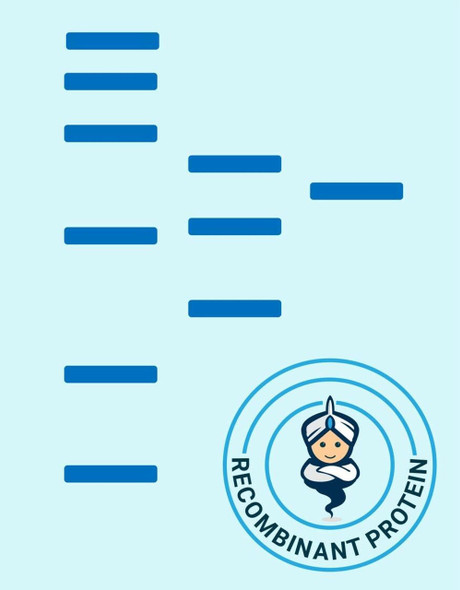Description
| Product Name: | Human SELP Recombinant Protein (His tag) |
| Product Code: | RPES6329 |
| Size: | 10µg |
| Species: | Human |
| Expression Host: | HEK293 Cells |
| Synonyms: | P-selectin, CD62 antigen-like family member P, Granule membrane protein 140, GMP-140, Leukocyte-endothelial cell adhesion molecule 3, LECAM3, PADGEM |
| Mol Mass: | 80.8 kDa |
| AP Mol Mass: | 120 kDa |
| Tag: | C-His |
| Purity: | > 95 % as determined by reducing SDS-PAGE. |
| Endotoxin Level: | Please contact us for more information. |
| Bio Activity: | Testing in progress |
| Sequence: | Met 1-Ala 771 |
| Accession: | P16109 |
| Storage: | Generally, lyophilized proteins are stable for up to 12 months when stored at -20 to -80°C. Reconstituted protein solution can be stored at 4-8°C for 2-7 days. Aliquots of reconstituted samples are stable at < -20°C for 3 months. |
| Shipping: | This product is provided as lyophilized powder which is shipped with ice packs. |
| Formulation: | Lyophilized from sterile PBS, pH 7.4. Normally 5 % - 8 % trehalose, mannitol and 0.01% Tween80 are added as protectants before lyophilization. Please refer to the specific buffer information in the printed manual. |
| Reconstitution: | Please refer to the printed manual for detailed information. |
| Background: | P-selectin/CD62P is a single-pass type I membrane protein which is a member of the Selectin family. It consists 768 amino acid (aa). P-selectin is a cell surface glycoprotein expressed by activated platelets and endothelial cells. It induced expression in lung, liver, kidney and heart after endotoxin treatment. Ca2+-dependent receptor for myeloid cells that binds to carbohydrates on neutrophils and monocytes. It mediates the interaction of activated endothelial cells or platelets with leukocytes. The ligand recognized is sialyl-Lewis X. it also mediates rapid rolling of leukocyte rolling over vascular surfaces during the initial steps in inflammation through interaction with PSGL1. P-selectin interacts with SNX17, PSGL1/SEPL, PODXL2, mediates neutrophil adhesion and leukocyte rolling. This interaction requires the sialyl-Lewis X epitope of PSGL1 and PODXL2, and specific tyrosine sulfation on PSGL1. |






